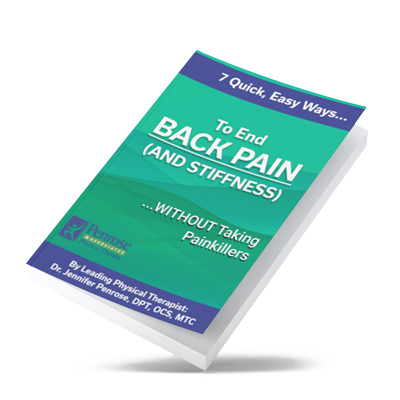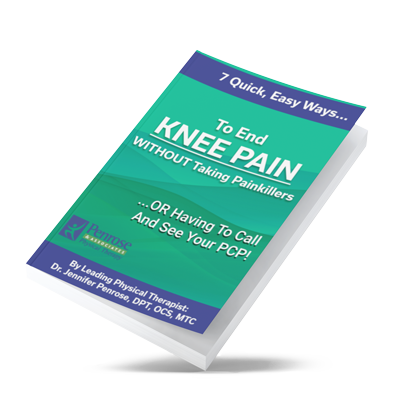Scoliosis. The diagnosis might sound daunting, but it doesn’t have to define your life. Millions of people around the world live fulfilling lives with scoliosis. Here at Penrose Physical Therapy, we want to empower you to take control of your scoliosis and live an active, healthy life.
Understanding Scoliosis
The spine is made up of 24 individual bones called vertebrae. These vertebrae connect to form a natural curve from front to back, providing support and flexibility. In scoliosis, the spine curves abnormally to the side, disrupting this natural alignment. This abnormal curvature can also cause the spine to twist, leading to unevenness in the body.
Types of Scoliosis Curves
There are two main ways to describe the curvature of scoliosis:
The location of the curve in the spine is identified based on the region affected. For example, a curve in the upper back is called a thoracic curve, while a curve in the lower back is called a lumbar curve. Sometimes, there can be curves in both regions, referred to as thoracolumbar curves.
The shape of the curve itself is described as either a “C” shape or an “S” shape. A “C” curve has one distinct bend in the spine, while an “S” shape has two curves bending in opposite directions.
Causes of Scoliosis
The exact cause of scoliosis remains unknown in most cases (idiopathic scoliosis). However, some factors are believed to play a role:
- Scoliosis can run in families, suggesting a genetic predisposition.
- Congenital scoliosis occurs due to problems in the development of the spine before birth.
- Certain neuromuscular conditions that affect muscle control can lead to scoliosis.
Scoliosis is most likely to progress during growth spurts, typically between the ages of 10 and 15. Early detection is crucial for monitoring progression and implementing treatment if necessary.
Diagnosis of scoliosis usually involves a physical examination by a doctor looking for any signs of unevenness in the shoulders, hips, or ribs. X-rays are then used to confirm the diagnosis and measure the degree of the curvature (Cobb angle).
Living an Active Life with Scoliosis
Staying Active is Key
While scoliosis affects the spine, it shouldn’t stop you from living an active life. Regular exercise is crucial for overall health and well-being, and it holds particular benefits for those with scoliosis:
- Exercise helps improve flexibility in the muscles and joints surrounding the spine, allowing for better movement and reducing stiffness. This improved flexibility can also contribute to better posture, which takes strain off the spine.
- A strong core is essential for supporting the spine and maintaining proper alignment. Specific exercises can target core muscle groups, promoting better stability and reducing the impact of the curvature.
- Some people with scoliosis experience pain. Exercise can actually help manage pain by improving circulation, reducing muscle tension, and promoting the release of endorphins, the body’s natural painkillers.
- Regular physical activity has well-documented benefits for mental health. Exercise can help reduce stress, boost mood, and improve overall well-being, all of which contribute to a better quality of life.
Choosing the Right Activities
The key to staying active with scoliosis is choosing exercises that are safe and effective.
Activities that put minimal stress on the spine are ideal. Swimming is a fantastic choice as it provides a full-body workout without impact. Walking, biking, and yoga are also great options.
Exercises that incorporate stretches and gentle movements can improve flexibility and range of motion in the spine. Yoga and Pilates are particularly good choices as they focus on mindful movement and core strengthening.
Targeted exercises that strengthen core muscles and the muscles surrounding the spine are crucial. A physical therapist can design a safe and effective program tailored to your specific needs.
It’s important to pay attention to your body’s signals. Stop any activity that causes pain and consult your doctor or physical therapist if you experience any discomfort.
Additional Tips for an Active Life with Scoliosis:
Excess weight can put additional strain on your spine. Eating a healthy diet and exercising regularly can help you maintain a healthy weight and reduce stress on your spine.
Being mindful of your posture throughout the day can significantly benefit your scoliosis management. A physical therapist can teach you proper posture techniques and exercises to strengthen the muscles that support good posture.
Always warm up your muscles before any exercise routine and cool down properly afterward. This helps prepare your body for activity and prevents injuries.
A physical therapist can be a valuable resource for creating a personalized exercise plan that addresses your specific needs and limitations. They can also teach you proper exercise techniques to ensure safety and effectiveness.
Treatment Options for Scoliosis
Treatment Tailored to You
The specific treatment approach for scoliosis depends on several factors, including:
- The degree of curvature (measured by the Cobb angle) is a major factor in determining treatment. Mild curves often require different management strategies than severe curves.
- The location of the curve in the spine (thoracic, lumbar, or thoracolumbar) can influence treatment choices.
- Treatment for growing children often focuses on managing curve progression, while treatment for adults may prioritize pain management and preventing further complications.
- Your doctor will consider your overall health, activity level, and personal preferences when recommending a treatment plan.
Here’s a breakdown of the most common treatment options for scoliosis:
For mild curves (less than 25 degrees), regular monitoring by a doctor may be sufficient. This involves periodic checkups and X-rays to track any curve progression.
For moderate curves (between 25 and 40 degrees), especially in growing children, wearing a back brace as prescribed by your doctor can help prevent further curvature. Braces are typically custom-made and worn for a specific number of hours each day.
Physical therapy plays a crucial role in scoliosis management for all curve severities. A physical therapist can design a personalized program to:
- Improve flexibility and posture through targeted stretches and exercises.
- Strengthen core muscles for better spinal support and stability.
- Manage pain through manual therapy and therapeutic exercises (if present).
In severe cases (curves exceeding 40 degrees), surgery may be recommended to correct the curvature and prevent future complications. Spinal fusion is a common surgical procedure for scoliosis, where vertebrae are permanently joined together to create a more stable spine.
Additional Considerations
Early detection and intervention are crucial for preventing curve progression in growing children.
Physical therapy is a vital component of treatment for all types of scoliosis, regardless of the chosen treatment path. It helps manage the condition, improve overall well-being, and prevent future complications.
The best approach to scoliosis management often involves a team of healthcare professionals, including doctors, physical therapists, and sometimes orthotists (specialists in creating braces).
Ready to Take Control of Your Scoliosis?
Scoliosis doesn’t have to define your life. At Penrose Physical Therapy, we believe in empowering you to manage your scoliosis and achieve your full potential. Whether you’re looking to improve flexibility, strengthen your core, manage pain, or simply learn more about living with scoliosis, we’re here to support you on your journey.
Take charge of your health and well-being. Call us today at 360-456-1444 to schedule a consultation at Penrose Physical Therapy located in Lacey, WA. Together, we can help you live an active and fulfilling life!






